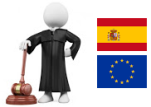🇪🇸 Español
Strategic Environmental Assessment.
Moment in which it must be carried out in the processing of plans and projects authorization files Judgment of the Supreme Court of September 15, 2021 Contentious-Administrative Chamber.
📚 Evaluaciones ambientales por anticipado.
📚 Resumen de criterios de evaluación ambiental del Tribunal de Justicia de la Unión Europea.
This Judgment resolves the appeal filed against the partial final approval of a revision of a General Urban Planning Plan.
For this reason, the moment of processing the plan at which the strategic environmental assessment (SEA) must be carried out is proposed: If the strategic environmental assessment is prior to the drafting of the content of the plan or can be carried out at any time during its processing, taking into account its instrumental nature. The Supreme Court indicates the following as legal norms that must be interpreted in the judgment: 9.1, 13.2, 17 and 18.1 of Law 21/13, of December 9, on environmental evaluation; 3.1, 4.1 and 8 of Directive 2001/42 / EC of the European Parliament and of the Council, of June 27, 2001, relating to the evaluation of the effects of certain plans and programs on the environment.
Well, says the TS; If the principles that inspire the SEA are those of caution and preventive action that characterize the European Union’s policy in the field of the environment (Article 191 TFEU) and its «justifying institutional purpose» is to «anticipate environmental protection before making decisions that may negatively compromise the environment ”, integrating into the plans in an instrumental way in a continuous process“ from the very draft phase ”, and if“ the environmental assessment has to be carried out as soon as possible ”, it is to this preliminary phase of the draft of the planning instrument, and not to any other moment in the processing of the plan, to which its initiation must refer.
Both the examination of the Directives that Law 21/2013 transposes (Directive 2001/42 / CE of the European Parliament and of the Council, of June 27, 2001, relative to the evaluation of the effects of certain plans and programs on the environment, and Directive 2011/92 / EU of the European Parliament and of the Council, of December 13, 2011, relative to the evaluation of the repercussions of certain public and private projects on the environment) as the text of the law itself and its explanatory statement, reinforce this conclusion, as they highlight its configuration as a strategic prevention instrument that allows integrating the environmental factor into the decision-making process of the planner from the very beginning and before its adoption in order to obtain more sustainable solutions. Logically, it is neither the mission of the Directives nor of the basic nature of Law 21/2013 to specify the exact procedural moment in which the initiation of the environmental procedure of the SEA should take place, instrumental to the substantive planning procedure in which it is embedded, but its location in the preliminary draft phase of the plan is unambiguous.
And in due consonance with what is available in these Directives, Law 21/2013 refers the start of the SEA to the preliminary draft phase of the plan. His Statement of Reasons explains with special clarity how the SEA is embedded in the substantive procedure for preparing the plan from that preliminary draft phase: “In order to achieve a correct integration of environmental aspects in planning, the standard orders versions of a plan or program -draft, initial version and final proposal- incorporate the content of the corresponding previous environmental document -strategic initial document, strategic environmental study and strategic environmental statement”.
According to this explanation, art. 18 requires that the request to initiate the SEA be accompanied by the draft plan and an initial strategic document that contains, at least, the planning objectives, the content of the proposed plan “and its reasonable, technically and environmentally viable alternatives.”, The foreseeable development of the plan, its potential environmental and climate change impact, and its foreseeable impact on the concurrent sectoral and territorial plans. In this way, the law imposes the analysis of alternatives from the environmental perspective already in the preliminary draft phase, thus reinforcing the preventive function of the SEA that derives from the precautionary principle that sustains it.
The conclusion of what we have been exposed to cannot be other than to place the initiation of the SEA in the preliminary phase of the draft of the planning instrument, in the terms indicated in art. 18 of Law 21/2013, without such initiation being deferred to a later moment in the processing of the plan.
